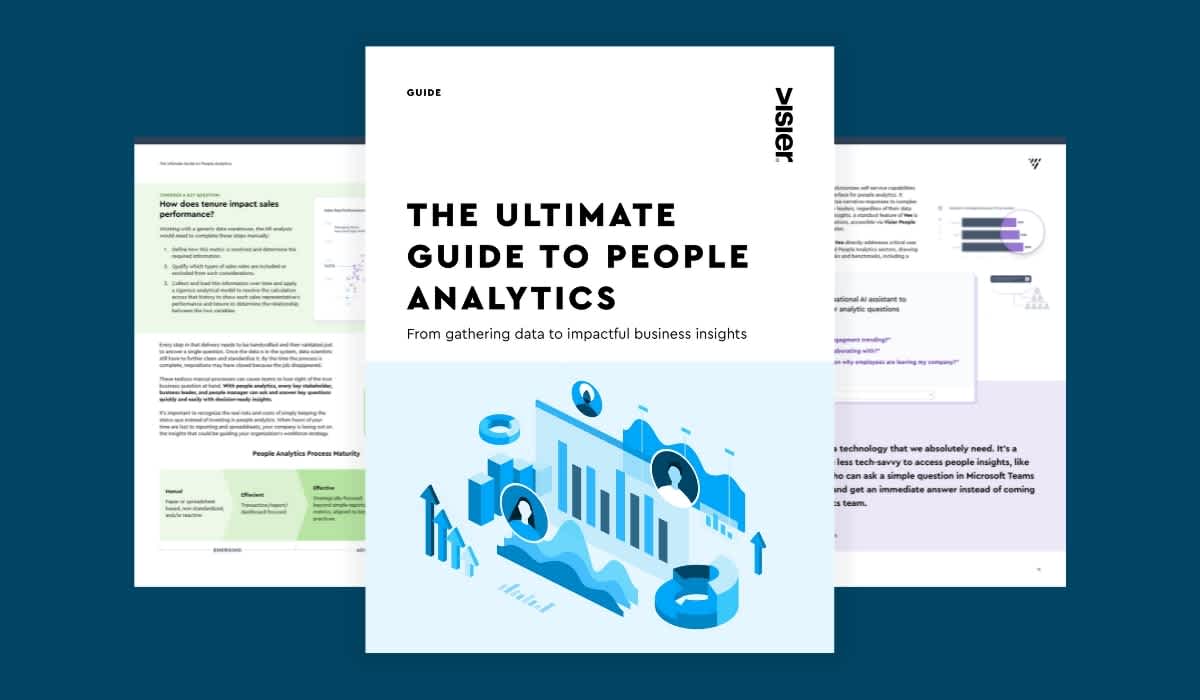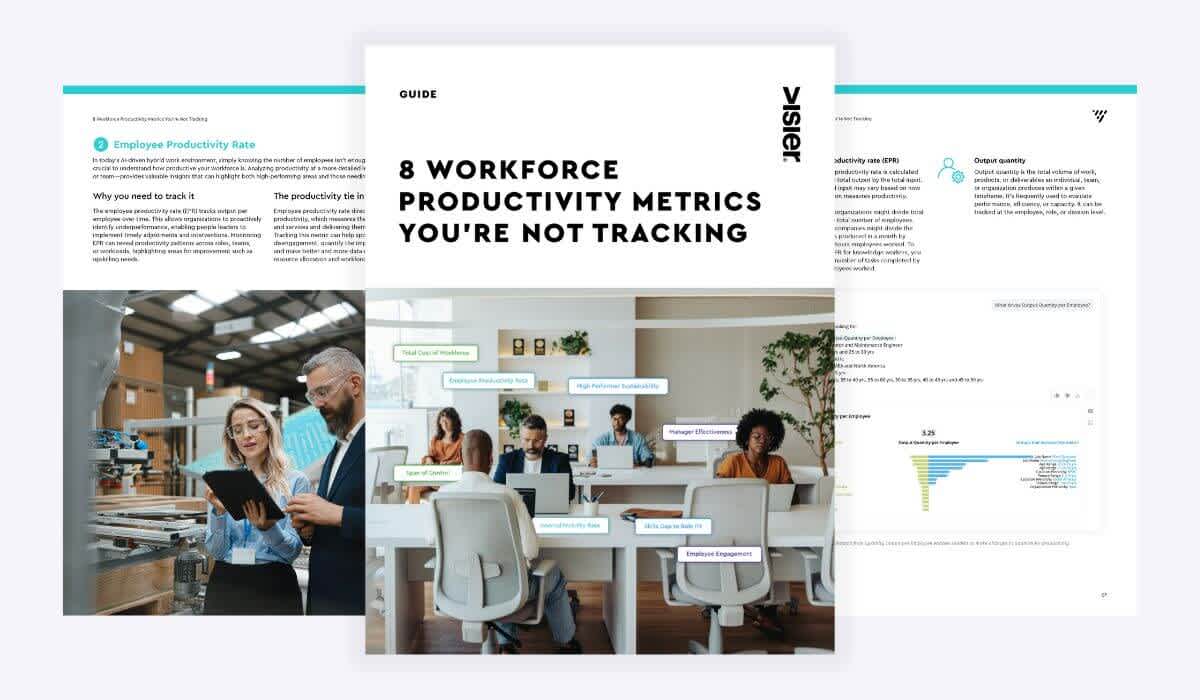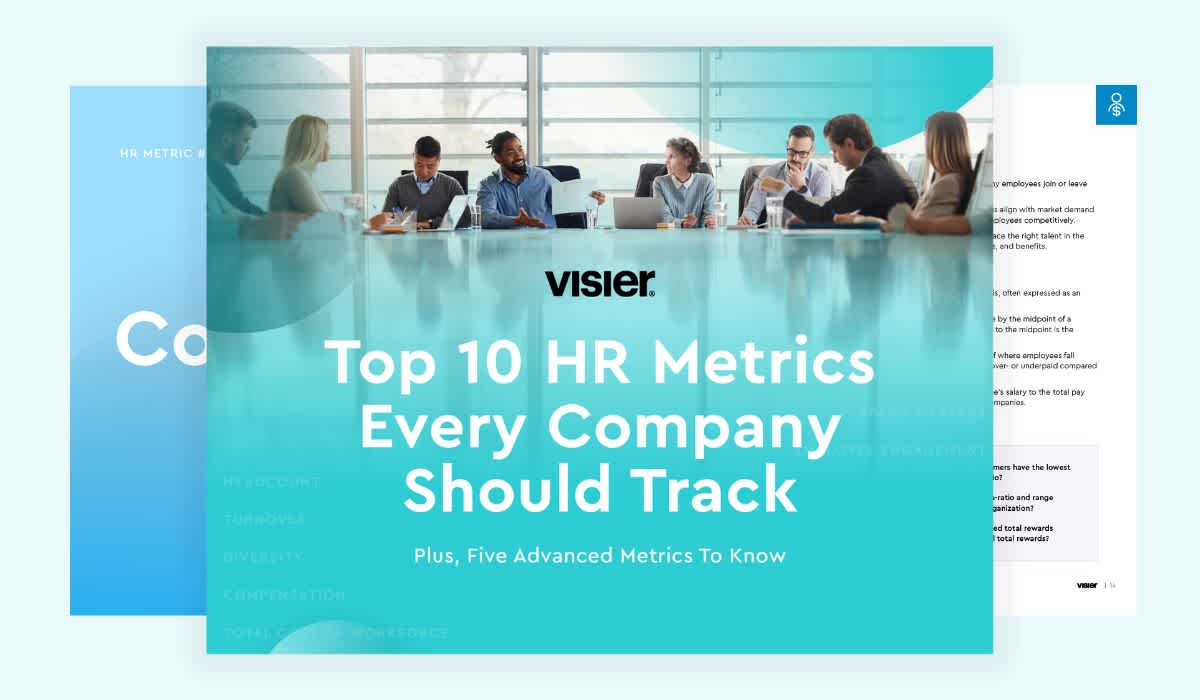The Human Element in Data-Driven Decision Making: Balancing Analytics, Biases, and Emotions
Dr. Pylin Chuapetcharasopon investigates how emotion affects HR analytics. Learn how to overcome biases so decisions are ethical, accurate, and impactful. Read more.

HR analytics supports data-driven decision-making, but it’s humans, not algorithms, who drive outcomes. Behind every chart or model lies human judgment, impacted by cognitive biases, emotions, and physiological information.
This article investigates how emotion affects HR analytics and provides ways to deal with these biases so that decisions are ethical, accurate, and impactful.
Let’s start with the basics behind how we make decisions in the first place.
How we think: Fast and slow systems
Human biases originate from the way our brains process information. Our thinking evolved to navigate uncertainty and immediate threats.
This evolutionary history gave rise to two systems of thought, famously described by Daniel Kahneman in his book, Thinking, Fast and Slow:
System 1: Fast, intuitive, and automatic. It relies on heuristics (mental shortcuts) to make quick decisions, which was essential for survival. However, it’s also prone to errors and cognitive biases.
System 2: Slow, deliberate, and logical. This system engages when we solve complex problems or make important decisions. While more accurate, it requires significant effort and focus.
These systems work together, but biases arise when System 1 dominates in situations where careful, deliberate thinking (System 2) is needed.
For example, System 1’s instinct to “fill in the blanks” can lead us to see patterns in random data or trust our gut over the evidence. System 2, which could correct these errors, may not always engage fully because it’s resource-intensive.
Understanding this interplay is crucial for recognizing how biases influence HR analytics. With this foundation, we’ll explore two common but less spoken about biases that often arise in the analytics field.
The inseparable link between your body and emotions
Dr. Lisa Feldman Barrett’s work on constructed emotion also reshapes how we think about emotions. Her research emphasizes interoception—the brain’s ability to interpret signals from the body.
The brain continuously collects data from systems like heart rate, breathing, and metabolism to predict and manage energy needs. These signals create sensations such as pleasantness/unpleasantness or agitation/calmness, which form the foundation of emotions.
A racing heart before a presentation could be labeled as anxiety or excitement, depending on how you interpret it. This theory challenges the idea that emotions are automatic reactions. Instead, emotions are flexible predictions influenced by body signals, context, and past experiences.
This matters in data-driven HR analytics because when faced with stress, decision-makers rely on intuitive thinking, which can lead to biased or less rational outcomes. And emotions aren’t something you can get rid of. Emotions are tied to body regulation, so it’s impossible to separate them from decision-making.
Managing emotions for better analytics and data-driven decision making
Integrating the following strategies, analytics teams can think more clearly, reduce emotional bias, and make better decisions under pressure:
1. Build emotional intelligence to help decision-makers recognize and regulate their emotions to reduce bias
Pause and reset: Encourage a 6-second pause and deep breath before making key decisions.
Name the emotion: Labeling emotions and feelings ("I'm feeling overwhelmed") shifts thinking from reactive (amygdala) to rational (prefrontal cortex).
Grounding techniques: Use the 5-4-3-2-1 method (identify things you see, hear, feel, smell, taste) to break stress cycles.
Movement matters: A simple stretch or posture shift can disrupt stress-driven decision-making.
2. Prioritize physical well-being since emotions are deeply tied to physiology, and maintaining physical health supports clearer thinking
Encourage healthy habits: Nutrition, exercise, and quality sleep improve emotional regulation.
Introduce recovery breaks throughout the day: Promote resonant breathing before high-stakes meetings, 10-minute walks to reset, or even napping spaces.
Offer wellness programs: Yoga, massage reimbursements, and mental health support enhance overall resilience.
How overconfidence bias skews data-driven HR analytics
Overconfidence bias happens whenever we overestimate our ability to interpret data or make accurate decisions. It’s rooted in System 1’s quick thinking and reinforced by our natural desire to feel in control and competent.
In workforce analytics, this bias can lead to misplaced certainty in conclusions, even when data doesn’t fully support them. This can negatively affect strategic business decisions down the line.
Overconfidence bias poses two critical challenges in HR analytics:
1. Hiring analytical talent
When hiring for an HR analytics team, it’s tempting to favor candidates who exude confidence. For example, who would you prefer?
Candidate A | Candidate B |
|---|---|
Talks about possibilities and probabilities rather than certainties. | Pushes analyses to the limit. Uses terms like "furthermore" and "moreover". |
Uses terms like "however", "maybe", and "on the other hand". | Uses terms like "impossible" or "certain". |
Provides answers that sound wishy-washy. | Provides definitive answers. |
Readily changes their minds. | Committed to their conclusions and reluctant to change their minds. |
While Candidate B’s confidence might seem appealing, research by Dr. Philip Tetlock reveals that the best forecasters, known as “Superforecasters,” are less confident.
They display humility, adaptability, and a willingness to revise their opinions when new evidence emerges. These traits align better with effective analytical work, where flexibility and critical thinking are essential.
2. Interpreting and acting on data
Overconfidence can lead HR professionals and data analysts to dismiss alternative explanations or underweight contradictory evidence. This overreliance on certainty can result in poor decisions.
A Duke University study reviewed over 11,600 S&P index forecasts made by CFOs. The correlation between their predictions and actual outcomes was close to zero.
Yet, these CFOs exhibited three times more confidence in their predictions than warranted.
In HR analytics, similar overconfidence can lead to overestimating the reliability of workforce predictions or assuming initiatives will succeed without sufficient evidence.
By fostering humility and critical thinking, HR teams can avoid these pitfalls and make more sound, data-driven decisions.
How to avoid overconfidence bias
Start by double-checking your assumptions. Regularly revisit and question your conclusions. Stay open to welcome challenges and new ideas by encouraging your team to share diverse viewpoints and constructive criticism.
Avoiding overconfinement is ultimately a game of balancing confidence and skepticism. Stay confident in your skills, but keep an eye on alternative interpretations.
If you don't have access to advanced models to validate these ideas, use basic validation techniques such as comparing past trends, conducting pilot tests, or using peer reviews to check assumptions.
If your organization has predictive analytics models, use simulations or A/B testing to validate predictive tools before full implementation.
Next steps for a more human HR function
To make sound and human data-driven decisions, maintain humility and openness, and ground your confidence in solid evidence.
Actively seek diverse perspectives to challenge assumptions and prioritize hiring analytical talent who embrace probabilities, consider alternatives, and adapt to new evidence—qualities often reflected in their use of cautious language like "however" or "maybe."



